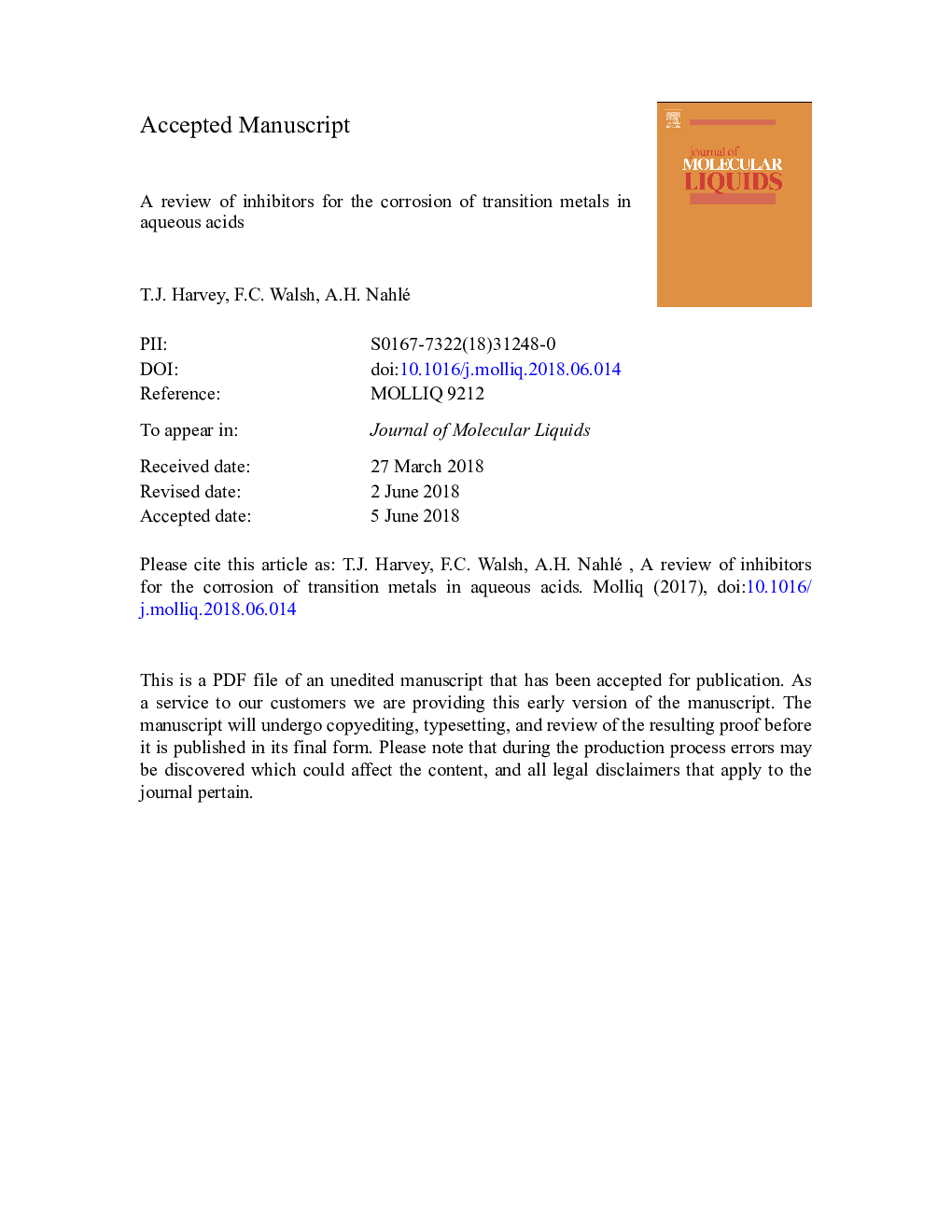| کد مقاله | کد نشریه | سال انتشار | مقاله انگلیسی | نسخه تمام متن |
|---|---|---|---|---|
| 7841768 | 1506505 | 2018 | 69 صفحه PDF | دانلود رایگان |
عنوان انگلیسی مقاله ISI
A review of inhibitors for the corrosion of transition metals in aqueous acids
ترجمه فارسی عنوان
بررسی مهار کننده های خوردگی فلزات گذار در اسیدهای آبی
دانلود مقاله + سفارش ترجمه
دانلود مقاله ISI انگلیسی
رایگان برای ایرانیان
کلمات کلیدی
موضوعات مرتبط
مهندسی و علوم پایه
شیمی
شیمی تئوریک و عملی
چکیده انگلیسی
The importance of the electrical double layer at the interface between a metal and an acid electrolyte together with its interaction with organic and inorganic molecules to produce initially electrostatic adsorption are highlighted. In some cases, a chemical bond is formed involving charge transfer or charge sharing between the metal surface and inhibitor molecules forming a coordinate bond through lone-pair electrons on heteroatoms or Ï electrons on inhibitors with multiple and aromatic bonds. The application of mathematical formulae to the variation in adsorbed inhibitor molecules at the metal surface is considered, with inhibitor concentration isotherms considering thermodynamic principles or the water displacement reaction where for an inhibitor molecule to adsorb at a metal surface several water molecules must be displaced first. The predominant ways in which molecules enable inhibition are formation of a physical barrier where a physical adsorbed barrier of molecules (usually polymeric or oxide promoting for this mode to predominant) impede movement near the metal surface or reduction in metal reactivity where chemisorbed inhibitor molecules adhere to active sites on the metals reducing the number of cathodic and anodic sites. Adsorption involving charged inhibitor species causes a change in the double layer and the potential at the outer Helmholtz plane, influencing the corrosion rates of both anodic and cathodic reactions. The first three modes are intimately with adsorption and the double layer the last involves interaction of the inhibitor molecules and the intermediate products formed during the partial electrochemical reactions, interaction of the adsorbed intermediates with organic molecules can either decrease (inhibit) or increase (stimulate) electrode reaction rate depending on the stability of the inhibitor-intermediate complex formed.
ناشر
Database: Elsevier - ScienceDirect (ساینس دایرکت)
Journal: Journal of Molecular Liquids - Volume 266, 15 September 2018, Pages 160-175
Journal: Journal of Molecular Liquids - Volume 266, 15 September 2018, Pages 160-175
نویسندگان
T.J. Harvey, F.C. Walsh, A.H. Nahlé,
